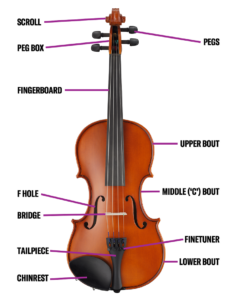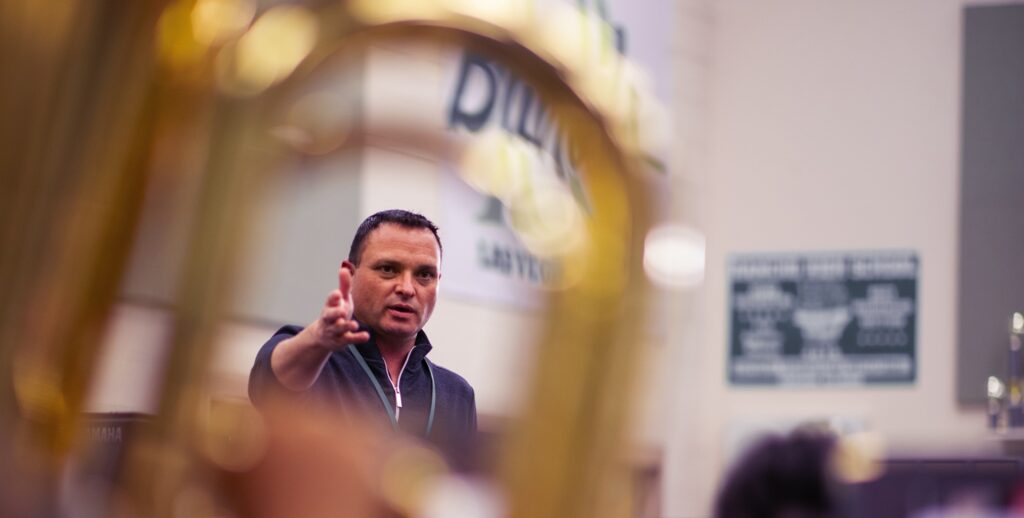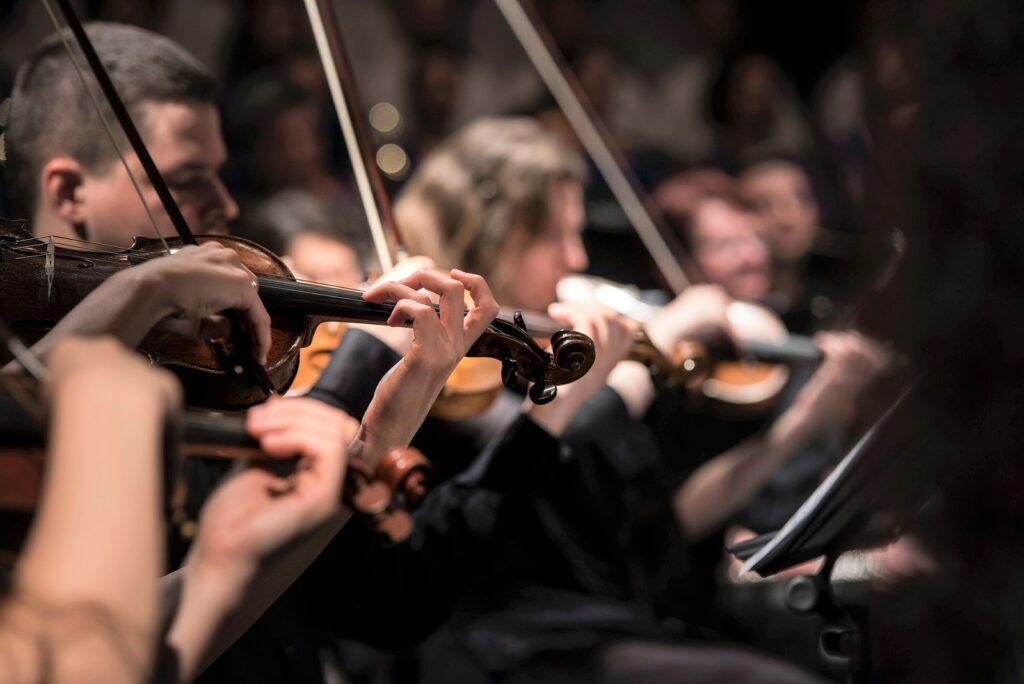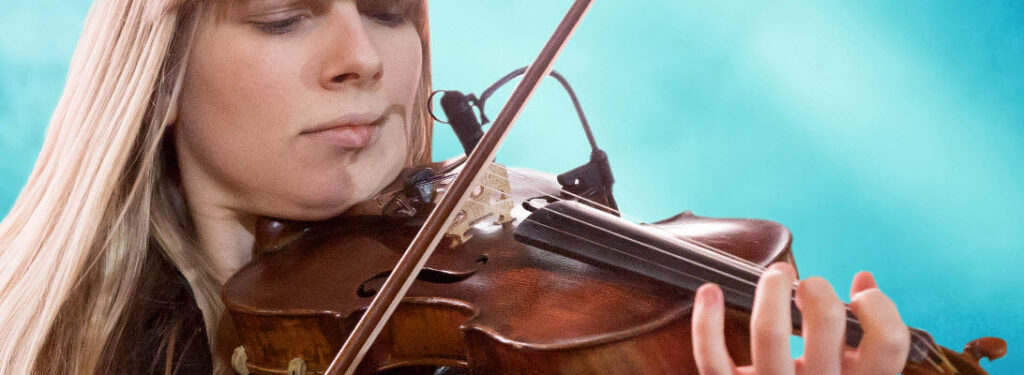General Care for Your Stringed Instrument
Properly caring for your stringed instrument will not only provide superior sound quality and playability, but it also increases the longevity of your instrument.
Each violin, viola, cello and bass is crafted using parts that are able to fail in a particular way that, if caught quickly, can be easily repaired by a qualified luthier (stringed instrument repair person).
Tuning
Most skilled players will begin tuning their instrument by loosening the fine tuners as far as they can, allowing them to utilize the pegs to their fullest advantage and then fine tuning the instrument to true pitch and keeping the player from over-tuning and possibly breaking the strings. (read the blog post, “How to Restring a Violin”).
Tuning also gives the player a great opportunity to assess the instrument!
- Check that the pegs are turning smoothly and fit properly.
- Are the strings wound on the legs properly (evenly spaced with no overlap)? Are any strings dented or frayed?
- Ensure that the fine tuners and the tailpiece are working properly.
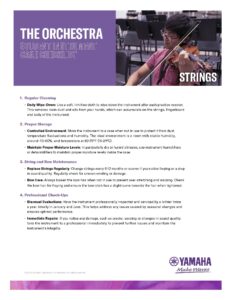
Download this Yamaha Strings Care Checklist for Students now!
Cracks and Open Seams
Cracks and open seams are relatively common on stringed instruments. Changes in humidity and temperature effect both the tonewood and the adhesive used to connect the front, back and sides. Catching these issues early is vital to repairing them effectively.
- Be sure to check over all glued contact points. This includes all seams, the fingerboard, nut and saddle.
- Look for splits and cracks along the wood grain surrounding the soundpost contact points (front and back of the instrument).
- Check pegs and neck for warping, twisting or splintering wood.
- Using a clean, untreated microfiber cloth to gently remove rosin from your instrument after each use can greatly improve instrument health and allow you to regularly check for any issues that may arise.
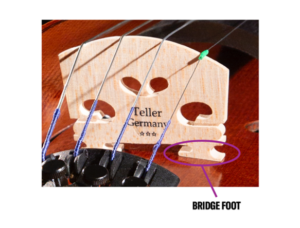
THE YAMAHA EDUCATOR NEWSLETTER: Join to receive a round-up of our latest articles and programs!
Bridge
Orchestral stringed instruments utilize maple bridges that are made to fit each individual instrument. An improper bridge fit can cause serious damage! The inside of the instruments are hollow, with only the soundpost distributing the pressure of the strings pushing on the bridge to keep the violin (or viola, cello or bass) from collapsing in on itself! Check to make sure the bridge is well-maintained and positioned properly on the top of your instrument to ensure pure tone and longevity.
- Check to make sure your bridge is positioned properly. The bridge should be set along the arched top in the middle of the fingerboard, with the “feet” centered between the notches of the “f” holes.
- Look for any visible decay in the wood of the bridge. Is the coloring nice, bright and flamed? Is the wood holding its shape or is it warping/curving on the top or sides? Is the maple firm and not soft and squishy?
- Make sure the feet of the bridge fit flush against the top of the instrument. Any gaps can create a difference in pressure, affecting not only tone but structural integrity.
- Look at the height of the bridge. Does it look too high or too low? Are the strings really hard to push down the closer you get to the bridge? Do the strings buzz when you press them against the fingerboard?
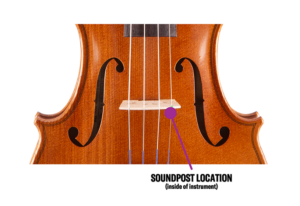
Soundpost
The soundpost is a small, carefully crafted maple dowel located on the inside of the instrument close to the bridge. The soundpost has two functions; it works as a support for the top of the instrument and it also controls sound! Having a properly fit and placed soundpost is integral for the stability and tone of your stringed instrument.
- Always check that your soundpost is upright and in its proper position just behind the treble foot of the bridge.
- In the case of a fallen soundpost, you may hear or see it rolling around the inside of the instrument. Immediately loosen all the strings and remove the bridge from the instrument to prevent cracks and visit a qualified luthier to refit the soundpost.

Bow
Stringed instrument bows are just as important to care for as the instrument itself! Bows should be thought of as an extension of the instrument, not an accessory. Keeping your bow in good working order will ensure easy playing and good technique.
- Tighten the hair on the bow to playing tension using the screw at the bottom, making sure the hair tightens and loosens smoothly.
- When tightened, look straight down the stick from the screw to the tip. There should be a slight curve upward toward the tip. Any side to side curvature or warping should be checked by a luthier.
- The hair on the bow should be full and light colored (unless using black hair on a bass bow). Look for any frayed or missing hair and discoloration (usually rosin build-up) near the frog and tip.
- Check the tip plate. Is it cracked or missing?
- Check the frog for cracks and dings.
- Always loosen the bow hair when not in use. Leaving the hair tightened can cause hair breakage, over-stretching, stick warping, frog and tip damage, or even cracking in wooden bows.
________________________________________________________
Stringed instruments should be evaluated by a luthier twice per year even if no problems are apparent. The general rule is to have this done in June and January as playing habits, temperature and humidity levels can affect these sensitive instruments. Remember, happy instruments make happy players!










